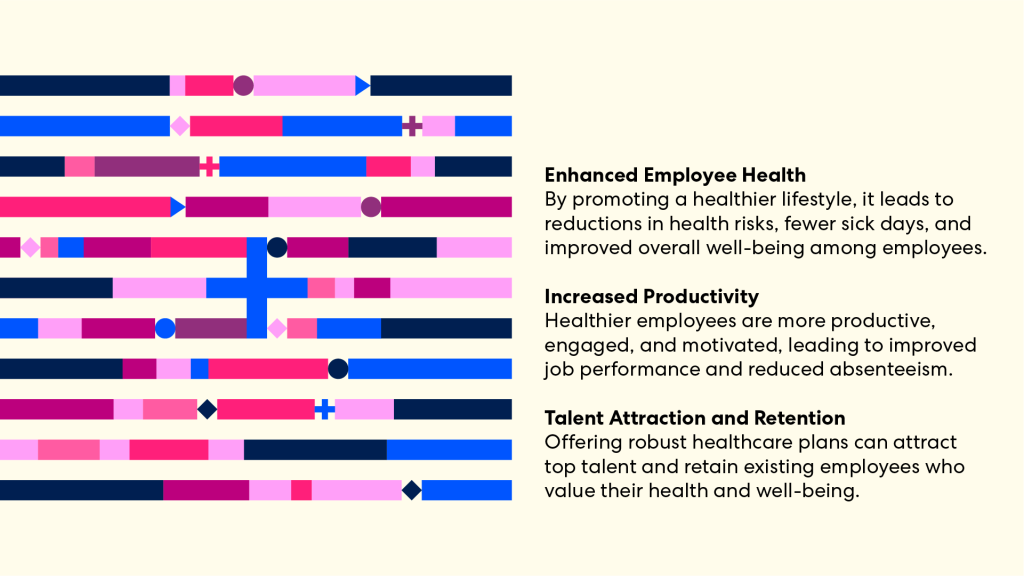Why Managed Care is the Smart Choice
Over the past decade, companies in India have started treating employee health as a board-level priority, not just an HR task. Rising healthcare costs, higher claims, and a younger workforce have pushed employers to rethink benefits. They now want plans that control costs and still provide strong cover.
Managed care corporate plans offer a disciplined way to handle healthcare. These plans use preventive care, cost control through networks, and coordinated treatment pathways. As a result, they reduce both the number and severity of claims. Over time, this helps keep premiums stable.
In today’s job market, employee benefits also play a big role in attracting and retaining talent. A strong managed care plan delivers two clear advantages. It protects company finances by controlling healthcare costs. At the same time, it shows employees that their health matters, which strengthens the employer’s brand.
For leadership, managed care is not just another benefit option. It is a strategy that secures business continuity and long-term productivity.
Health Trends Changing Corporate Healthcare
1. Rise of Lifestyle Diseases
India’s workforce faces more lifestyle diseases such as diabetes, hypertension, and heart conditions. These problems appear earlier in life, especially among office workers. Long hours at desks, poor diets, and stress play a big role.
For employers, these conditions lead to higher medical claims, more sick leave, and lower productivity. Without preventive care, costs will keep rising and affect both budgets and performance.
2. Generational Health Needs
Workforce demographics also shape benefit priorities.
- Millennials (over 50% of the workforce) use medical services more often, especially for lifestyle-related health issues. They prefer digital, on-demand access to doctors.
- Gen Z values mental health support, wellness programs, and preventive services over hospital-only coverage.
These expectations push companies to design plans that meet new health needs.
3. Post-Pandemic Shifts
COVID-19 changed how people see health benefits. Screenings, OPD coverage, and mental health support are now essential, not optional. This change highlights the weakness of traditional, treatment-only insurance. It also shows why managed care, with its proactive and preventive focus, is more relevant today.
How Managed Care Differs from Traditional Insurance
Traditional insurance mainly reimburses costs after treatment. Managed care shifts the focus. Its goal is to prevent high-cost treatments by promoting early detection, guided care, and strict cost control.
Key features include:
- Preventive focus: Annual check-ups, screenings, and wellness programs.
- Network rates: Pre-negotiated prices with trusted hospitals and specialists.
- Utilisation checks: Reviews to ensure treatments are necessary.
- Integrated services: OPD coverage, mental health care, and lifestyle support.
For employers, this means fewer claims, lower premium hikes, and healthier employees.
Choosing the Right Managed Care Plan
Plan Types
| Plan Type | Flexibility | Cost Control | Network Breadth | Best For |
|---|---|---|---|---|
| HMO | Low | High | Limited | Cost-focused firms |
| PPO | High | Medium | Wide | Companies valuing choice |
| EPO | Medium | Medium | Moderate | Balanced approach |
| POS | High | Medium | Wide | Firms seeking in/out-network mix |
Modern Add-Ons
Many employers now add:
- OPD cover for early care
- Teleconsultations for 24×7 access
- Super top-up policies for extra cover
- Wellness programs for nutrition, fitness, and stress
This mix lets companies provide strong benefits while keeping costs under control.
Unified Health Management Systems (UHMS)
UHMS platforms bring all health benefits together in one digital hub.
Advantages include:
- Efficiency: Centralised claims and policy management
- Data insights: Reports that guide targeted health programs
- Engagement: Employee portals that boost awareness and use
- Integration: Preventive and mental health tools on one platform
Example: A tech company in Bengaluru adopted UHMS with managed care. Within a year, claims dropped 22% and preventive screenings rose 18%. The result was both cost savings and better employee health.
Regulatory Landscape in India
After COVID-19, the IRDAI pushed employers to offer stronger health coverage. While statutory schemes exist, they have limits:
- ESI covers some wage groups but has limited providers and benefits.
- Ayushman Bharat supports low-income households but doesn’t fit corporate needs.
Managed care goes beyond compliance. It offers broader coverage, better service, and measurable results.
Role of Technology in Managed Care
Digital tools make managed care scalable and effective.
- Telemedicine: Faster access to care anywhere.
- Predictive analytics: Identifies high-risk employees early.
- Mobile apps: Track fitness, send reminders, and educate staff.
- Automated claims: Speed up processing and cut admin work.
These tools save costs and improve the employee experience.
Measuring ROI
Direct savings come from lower claims and fewer premium hikes. Preventive care also helps avoid expensive treatments. Indirect gains include fewer sick days, better focus at work, higher employee satisfaction, and stronger employer branding that supports talent acquisition.
Implementation Framework
Steps for employers:
- Assess workforce health risks
- Select the right managed care model
- Use UHMS to centralise processes
- Add OPD, telehealth, and wellness benefits
- Educate employees to boost adoption
- Track data and refine the plan each year

Employee benefits in the post-pandemic world.
As businesses and employees move past the period of crisis, they start reckoning with the realisation that structural changes are needed when it comes to employee benefits. In the post-pandemic era, preventive healthcare has surged to the forefront of priorities. OPD benefits serve as a potent tool in this regard, empowering employees to embrace proactive health management and reduce the risks associated with pre-existing health conditions. Through regular health screenings, consultations, and early detection, employees are equipped to tackle potential health issues at the outset. From a business perspective, healthy employees translate not only in higher rates of employees’ productivity and satisfaction but also in lower levels of absenteeism and sick leaves – and the costs associated with these phenomena:
According to the WHO, already in 2017, work-related health problems were said to result in an economic loss of 4–6% of GDP for most countries.
who.int/news-room
Final Word
As healthcare costs continue to rise and employee expectations shift towards preventive, holistic care, Managed Care corporate plans provide a clear pathway to balancing fiscal responsibility with workforce well-being. For employers, they are not just a benefits upgrade but a strategic tool to improve retention, productivity, and cost predictability.
Your workforce’s health is your competitive advantage, and we can help you protect it. Talk to Even to design a Managed Care plan tailored to your business needs.



